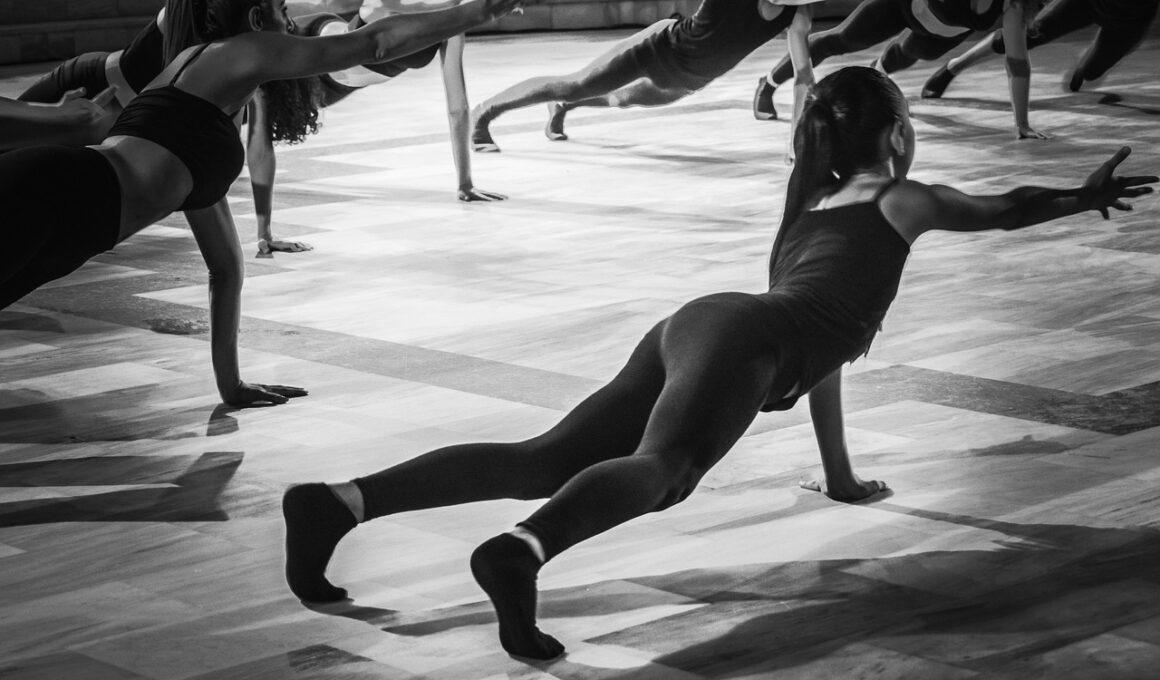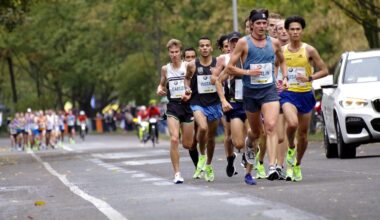Incorporating Dance into Senior Home Fitness Routines
In recent years, there has been a growing interest in incorporating dance into fitness routines for seniors. Dance offers numerous physical benefits, such as improved flexibility, balance, and strength. These components are vital for maintaining mobility and independence as we age. In addition to physical advantages, dance provides mental stimulation, which helps keep the mind sharp. Engaging in rhythmic movement can enhance mood and alleviate feelings of loneliness or depression. The joy of dancing can create a sense of community and connection. Choosing a variety of dance styles, such as ballroom, salsa, or even line dancing, can cater to different preferences and energy levels. Incorporating a social aspect through group classes can also encourage participation. Dance can be easily adapted for home settings, making it accessible even without professional instruction. With the combination of music and movement, seniors can engage in enjoyable, low-impact cardiovascular activity that is fun and effective. By blending dance with traditional exercise, seniors can create a well-rounded home fitness routine that addresses both physical and mental health needs. Overall, the inclusion of dance represents a holistic approach to senior fitness.
One of the main advantages of incorporating dance into senior fitness routines is that it improves cardiovascular health. Dance elevates the heart rate and encourages circulation, which can help lower the risk of heart disease and stroke. By dancing for at least 30 minutes most days of the week, seniors can engage in a moderate exercise routine. Activities such as waltzing or cha-cha provide a fun way to get the heart pumping. Moreover, these dances require coordination and rhythm, which contribute positively to cognitive functioning. It is essential to choose music that seniors enjoy, as this can motivate them to stick to their routine. Furthermore, dancing can serve as a social activity; engaging with peers not only enhances motivation but also provides emotional support. Groups can be formed where seniors share their favorite songs and dance moves. Dance partners can encourage each other, making even a simple two-step more enjoyable. From gentle chair dancing to more vigorous routines, the versatility of dance ensures that participants stay engaged and have fun while exercising. Ultimately, the combination of music and movement creates a fulfilling experience for seniors.
Types of Dance Suitable for Seniors
There are various dance styles suitable for seniors that cater to different preferences and fitness levels. For example, gentle genres like waltz or ballroom dancing are excellent for those new to physical activity. These dances focus on smooth movements and can be performed in both solo and partnered formats, making them incredibly adaptable. Line dancing, known for its simplicity and repetitive steps, offers enjoyment for those who may not feel confident in social dancing settings. Another enjoyable option is Zumba Gold, a dance-based fitness program tailored for older adults, featuring simplified moves and slower tempos. For seniors looking for more energy, jazzercise combines dance with strength training and flexibility. Seniors who enjoy cultural experiences might find delight in traditional folk dances, which are not only entertaining but also connect them to cultural heritage. Many seniors also appreciate chair dancing, which allows them to engage in dance while seated, making the activity accessible to those with mobility limitations. Finding the right dance style is crucial for ensuring long-term adherence to an exercise routine, as personal enjoyment leads to better outcomes in fitness and well-being.
When integrating dance into home exercise programs, setting up a comfortable and safe environment is paramount. Ensure adequate space for movement, free of obstacles. Using a sturdy chair for support can also enhance safety for those with mobility issues while dancing. It is advisable to wear comfortable clothing that allows for ease of movement and supportive shoes to prevent injury. Incorporating music that inspires enthusiasm helps set the mood for the workout. Create a playlist of favorite tunes to keep the energy alive during sessions. Seniors can also use online resources such as dance videos or virtual classes to follow along at home. Various platforms offer instructional videos suited for beginners, making it possible to learn essential dance steps at one’s own pace. Additionally, engaging family members or friends can turn a routine into a fun group activity. By sharing the experience, seniors feel supported and less intimidated to participate. Finally, consistency is key to forming a habit, so setting a regular schedule for dance sessions can enhance dedication to the exercise program.
The Mental Health Benefits of Dance
Dance is not only beneficial for physical fitness but also significantly impacts mental health. Research indicates that dance therapy can reduce anxiety and depression while enhancing overall mood. The social aspect of dance encourages interaction, which is crucial for combating feelings of isolation that many seniors experience. Music combined with movement stimulates brain activity, making it an effective tool for cognitive engagement. Participating in dance can also build self-esteem and confidence, particularly when learning new skills or performing in front of others. The joyful nature of dance allows seniors to express themselves creatively, which fosters emotional wellness. Furthermore, focusing on rhythm and steps can provide a meditative effect, helping to alleviate stress. As seniors engage in dance, their bodies release endorphins, which stimulate feelings of happiness and excitement. Incorporation of dance into regular fitness routines can create a positive feedback loop; as seniors feel better emotionally, they are more motivated to maintain an active lifestyle. Ultimately, the rich benefits of dance encompass both physical and mental health, proving that it is a valuable form of exercise in senior home fitness programs.
Nutrition is integral to enhancing the benefits of dance in senior fitness routines. Proper nutrition fuels the body for physical activity, ensuring energy levels remain high. A balanced diet rich in fruits, vegetables, whole grains, and lean proteins supports muscle function and recovery. Hydration is vital, especially when engaging in dance routines. Seniors must drink enough water before, during, and after dancing to prevent dehydration. Including nutrient-dense snacks, such as yogurt, nuts, or smoothies, can help maintain energy reserves. It’s also important for seniors to consult healthcare providers or nutritionists to address individual dietary needs. Some seniors might benefit from supplementation, particularly with vitamin D and calcium for bone health. Tailoring meals to include foods that combat inflammation can ease discomfort associated with physical activities. Meal prepping can ease the routine, ensuring that healthy options are readily available. Finally, fostering a mindful approach to eating by paying attention to hunger and fullness cues will help maintain a healthy weight. This approach ultimately supports overall health, which can enhance the enjoyment and effectiveness of incorporating dance into fitness routines.
Conclusion: Embracing Dance for Fitness
In summary, incorporating dance into senior home fitness routines provides numerous benefits for physical, mental, and emotional health. With a variety of dance styles to choose from, seniors can personalize their fitness journey, ensuring enjoyment and long-term adherence. The adaptability of dance allows it to be performed in various settings, making it accessible for everyone. Dance communicates joy, creativity, and connection, which enriches lives in ways that traditional exercises might not offer. Through engaging sessions, seniors can improve their cardiovascular health, strength, and balance while also fostering social interactions. By creating a supportive environment and incorporating healthy nutrition, seniors enhance their ability to thrive and enjoy life fully. It’s never too late to begin dancing, as this activity welcomes individuals of all fitness levels. The positive impact of dance extends beyond physical movement; it has the potential to create lasting friendships and joyful memories. Therefore, seniors are encouraged to embrace dance as an integral part of their fitness approach, leading to healthier, happier lives.
Overall, this incorporation creates a holistic view of wellness. Dance can break barriers to fitness and provide meaningful engagements that resonate well with seniors. Whether at home or in a studio, individuals can experience the uplifting power of dance. Thus, let’s celebrate the art of dance as an invaluable tool in enhancing senior fitness routines today!


